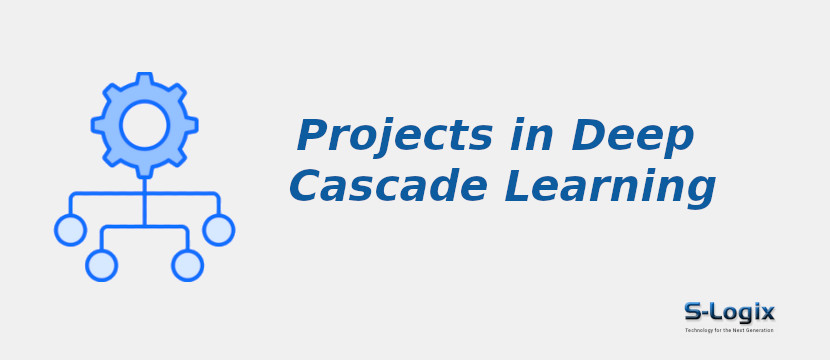Project Background:
Deep Cascade Learning represents an innovative approach in the realm of machine learning tailored to address challenges associated with classifying highly imbalanced datasets. It involves developing hierarchical models with multiple stages or cascades where each stage focuses on gradually refining the classification decisions. This method is particularly well-suited for scenarios where positive samples are rare compared to negative samples, a common challenge in applications such as fraud detection, rare disease diagnosis, or anomaly detection. Traditional classification models struggle in such imbalanced settings, as they tend to be biased towards the majority class. Deep cascade learning aims to mitigate this imbalance by employing a series of classifiers, each trained to make decisions at different difficulty levels. The initial stages filter out the easy-to-classify instances, allowing subsequent stages to focus on more challenging cases. This project background encompasses the exploration of novel deep cascade architectures, training strategies, and optimization techniques to enhance the effectiveness of imbalanced classification tasks, offering promising solutions to real-world problems where positive instances are scarce.
Problem Statement
- The deep cascade learning centers around addressing imbalanced classification scenarios, where negative samples significantly outnumber positive samples.
-
Traditional machine learning models struggle to handle such imbalances, leading to biased predictions favoring the majority class.
-
The primary challenge is to develop effective strategies for learning from imbalanced datasets, where the goal is often to identify rare events or anomalies.
-
Efficient allocation of computational resources is critical, as each cascade stage focuses on different subsets of instances based on their difficulty level.
-
Balancing the trade-off between false positives and negatives across different stages is a central concern.
-
Moreover, achieving robustness to noisy or mislabeled instances is essential for the success of Deep Cascade Learning.
Aim and Objectives
- Develop effective strategies for handling imbalanced datasets through Deep Cascade Learning, particularly focusing on scenarios where positive samples are rare.
-
Design optimal deep cascade architectures for imbalanced classification.
-
Devise stage-wise learning and decision-making mechanisms within the cascade.
-
Adaptively adjust the cascade depth and complexity to dataset intricacies.
-
Efficiently allocate computational resources for different stages based on difficulty levels.
-
Ensure robustness to noisy or mislabeled instances.
-
Improve overall classification accuracy and reliability in imbalanced scenarios.
Contributions to Deep Cascade Learning
1.Exploration and development of optimal deep cascade architectures tailored to specific imbalanced datasets, considering depth, width, and the number of stages to maximize classification performance.
2.
The introduction of innovative stage-wise learning strategies within the cascade allows for efficient filtering and refinement of classification decisions at different difficulty levels, particularly focusing on rare positive instances.
3.
Development of efficient resource allocation techniques, ensuring that computational resources are allocated judiciously across different stages of the cascade, with a focus on challenging instances that require deeper scrutiny.
4.
Strategies for balancing the trade-off between false positives and false negatives across cascade stages, allowing for fine-tuning of the model based on the specific requirements of the imbalanced classification task.
5.
Innovations to improve the computational efficiency of Deep Cascade Learning models, making them scalable and practical for deployment in resource-constrained environments.
Deep Learning Algorithms for Deep Cascade Learning
- Deep Neural Networks (DNNs)
-
Convolutional Neural Networks (CNNs)
-
Recurrent Neural Networks (RNNs)
-
Long Short-Term Memory Networks (LSTMs)
Datasets for Deep Cascade Learning
- Credit Card Fraud Detection Dataset
-
Synthetic Minority Over-sampling Technique (SMOTE) datasets
-
Medical Diagnosis Datasets
-
ECG5000 - Electrocardiogram Time Series Dataset
-
Thyroid Disease Dataset
-
Mammographic Masses Dataset
-
Anuran Calls (MFCCs) Dataset
-
Internet Advertisements Dataset (UCI)
-
Human Activity Recognition Using Smartphone Dataset
-
Covertype Dataset
-
Human Microbiome Project Dataset
-
Multi-Class Imbalance Dataset (MIC-Dataset)
-
Cervical Cancer Risk Classification Dataset
-
Molecular Biology (Pima Indians Diabetes) Dataset
Performance Metrics
- Area Under the Receiver Operating Characteristic (ROC) Curve (AUC-ROC)
-
Area Under the Precision-Recall Curve (AUC-PR)
-
F1 Score
-
Precision
-
Recall
-
G-Mean
-
Matthews Correlation Coefficient (MCC)
-
Accuracy
-
Balanced Accuracy
-
Area Under the Cumulative Gain Curve (AUC-CG)
-
Kolmogorov-Smirnov statistic
-
Brier Score
-
Normalized Entropy
Software Tools and Technologies:
Operating System: Ubuntu 18.04 LTS 64bit / Windows 10
Development Tools: Anaconda3, Spyder 5.0, Jupyter Notebook
Language Version: Python 3.9
Python Libraries:
1. Python ML Libraries:
- Scikit-Learn
- Numpy
- Pandas
- Matplotlib
- Seaborn
- Docker
- MLflow
2. Deep Learning Frameworks:
- Keras
- TensorFlow
- PyTorch
